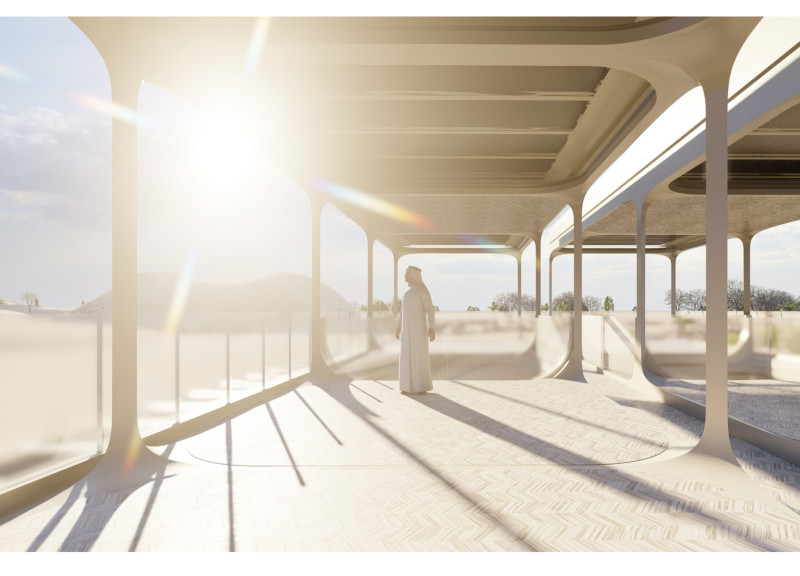5 key facts about this project
At its core, the project represents a thoughtful response to its surroundings. The architecture is characterized by a design that respects and enhances the local setting, drawing on cultural elements and environmental features to create a cohesive narrative. The building functions as a multi-use space, accommodating [insert specific uses such as residential, commercial, educational, or community functions]. This versatility allows it to serve diverse groups, fostering community interaction and enhancing the urban fabric.
The overall form of the structure reflects a careful consideration of scale and proportion, ensuring that it fits well within the surrounding landscape. Key architectural details include [mention specific architectural elements, such as facades, window treatments, or roofing systems], which contribute to the building’s unique identity. The use of materials plays a significant role in the project’s success; the combination of concrete, glass, wood, and steel not only meets functional requirements but also enhances the visual and tactile experience of the space. The façade, for example, employs a mixture of textures and colors that resonate with the natural environment, creating a dialogue between the building and its setting.
One of the most notable aspects of this project is its approach to sustainability. The design incorporates various strategies aimed at reducing environmental impact and promoting energy efficiency. Features such as passive solar orientation, green roofs, and rainwater harvesting systems reflect a commitment to sustainable principles, ensuring that the building operates harmoniously within its ecological context. Such design elements are crucial as they not only contribute to the project’s functionality but also align with broader global goals of sustainable development.
The interior spaces have been designed with an emphasis on flexibility and user experience. Different areas are segmented to offer distinct atmospheres, from collaborative environments to quiet retreats. Natural light permeates the interiors through strategically placed windows and skylights, enhancing the overall ambiance and promoting well-being among occupants. Attention to acoustics and thermal comfort further elevates the usability of the spaces, making them conducive to a variety of activities.
In terms of unique design approaches, the project stands out for its ability to challenge conventional notions of space and form. It employs innovative layouts that create transparency and connectivity, allowing for easy navigation and interaction within the building. The interplay of indoor and outdoor spaces blurs boundaries, inviting nature into the heart of the design. This thoughtful orchestration of elements reflects a commitment to enhance the user experience while fostering a sense of community among those who occupy and interact with the space.
This architectural project is an exemplary model of how contemporary design can respond to functional needs while respecting the cultural and environmental context. By exploring architectural plans, sections, and designs, one can gain deeper insights into the project’s thoughtful approach and the ideas that have shaped its development. The project invites visitors and residents alike to engage with its spaces, ultimately enriching the architectural narrative of [insert geographical location]. By examining this model closely, readers can appreciate the nuances of its design and the innovative thinking that underpins its realization.


























